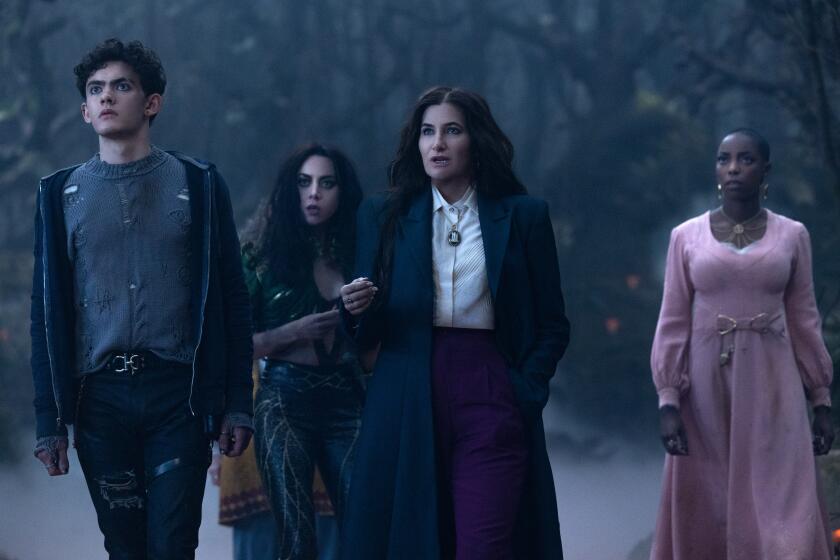Lesson No. 1: a love of music
It’s something of a music-class tradition: third- and fourth-graders learning to play the recorder, proudly tootling “Hot Cross Buns.”
Just not in Nina Stern’s class.
The repertoire Stern introduces to youngsters from the Bronx and Harlem reaches back centuries and around the world, to cultures where the students have their roots. There are songs from the Caribbean, Asia and Africa, as well as American spirituals, pieces from the 12th century and, coming soon, Renaissance works -- all selected to be rhythmically and melodically interesting enough to appeal to children who know only hip-hop.
But what she teaches isn’t the only nontraditional aspect to Stern’s classes at Ella Baker School on New York City’s East Side.
Stern, one of the country’s leading performers of the recorder and classical clarinet, took lessons in conducting to learn how to communicate nonverbally with students who, she said, “get yelled at a lot” and respond well to silent gesture.
She teaches them how to read music and how to improvise, and she breaks down complex melodies to ensure a role in the ensemble for every child. Refusing to give in to the stereotype of the twice-weekly arts class in which kids relax, she demands excellence.
“We’re not necessarily trying to turn these children into musicians,” Stern said, “although it is amazing to see what some of the third- and fourth-grade students can do after one year of playing the recorder. We want to give them a sense of discipline and focus and help them realize what it means to work hard at something and get fantastic results. And they are getting all that.”
Recorder music wafts through the school at breakfast time as children grab time to practice, and at lunch, when Stern often gives extra instruction to those who want it. Some pull out their instruments as they wait for the bus to take them home. They all take great care of their brightly colored plastic recorders -- which are end-blown flutes -- tucking them into book bags to keep them safe.
“This music helps me express my feelings,” said 9-year-old Nyja Poe, a fourth-grader whose tastes now include opera. “I thought I couldn’t play the recorder. Now I know I can, and if I can play the recorder, I can play almost any instrument. And I can learn other new things, too.”
Fostering that sense of focus and discovery is what Stern had in mind when she decided to teach at Ella Baker, opened in 1996 as an alternative public school with about 280 students, most of them from low-income families. Classes, from pre-kindergarten through eighth grade, are held in large, bright classrooms on three floors of a block-size city building that houses four other small schools.
Stern has performed with orchestras and taught college students at Mannes College of Music and the Civica Scuola di Musica in Milan. But last year, after becoming director of education for the New York Collegium, an ensemble of players and singers dedicated to the music of the Baroque era (1600-1750), she and the collegium’s executive director, Dorothea Endicott, decided to reach out to children in a way that went beyond the single concert that many musical groups traditionally offer.
She and Endicott found a willing partner in Ella Baker Principal Laura Garcia, who said she wants children to be exposed to a full range of the arts, even at a time when many arts programs in public schools are struggling for support.
According to a new report by the National Assn. of State Boards of Education, budget cuts in states across the country are affecting many programs, considered “supplemental” by many educators. The report laments a trend toward a more narrow curriculum that does not include enough arts and foreign-language instruction.
Stern wanted to be in the classroom and establish relationships with students as part of an approach that is on the cutting edge of music education, said Libby Larsen, a Grammy-winning composer who holds the Harissios Papamarkou Chair in Education and Technology in the Library of Congress’ John W. Kluge Center.
In too many schools, Larsen said, music is taught the same way as in the 1800s, with teachers who incorrectly teach beat as rhythm, do not require students to hold their instruments properly and fail to connect the music with the culture in which their students live.
“Music education should be aimed at making music become part of a child’s life, and that’s what Nina is doing,” Larsen said.
More to Read
The biggest entertainment stories
Get our big stories about Hollywood, film, television, music, arts, culture and more right in your inbox as soon as they publish.
You may occasionally receive promotional content from the Los Angeles Times.










